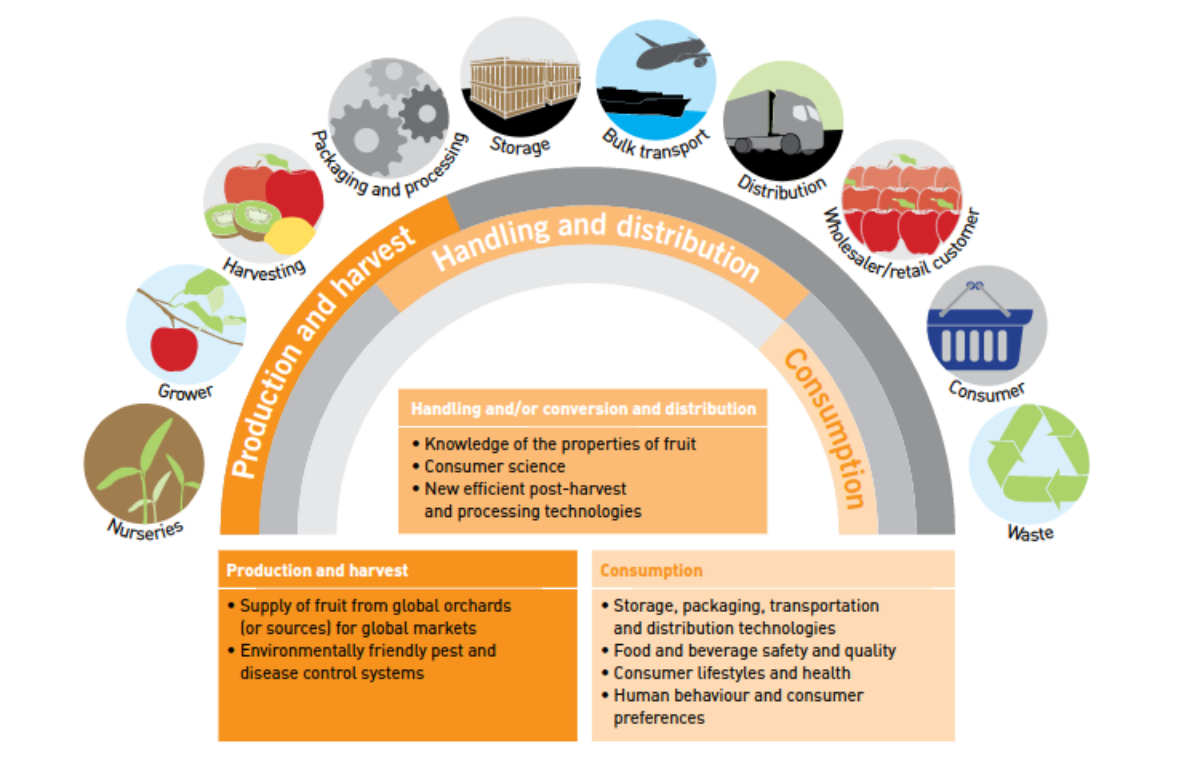Defined by the American Society for Horticultural Science as, “the art and science of producing, improving, marking, and using fruits, vegetables, flowers, and ornamental plants,” horticulture is an important component of society that positively impacts citizen’s quality of life. Such improvements can take the form of, for example, increased nutrition, more attractive living environments, or a demonstration of cultural identity.
From an economic perspective, horticulture is a $17 billion [USD] industry that produces more than 2.4 billion tons of goods annually as well as provides employment and income to various participants of horticultural supply and value chains. It is also a growth market with enterprises that vary vastly in size.

Each supply and value chain has a number of different stakeholders who are affected by the flow of goods. The actions taken by each link of the chain influences the other members. Therefore, cooperation plays a strong role in the effectiveness of a supply or value chain.

With such a wide range of stakeholders, the types of employment provided by horticulture are many. The end-products of these services provide aesthetic, sociological, and psychological benefits. Such benefits range from being able to enjoy fresh fruit on a daily basis to drinking a fine bottle of wine with friends to being able to send a sick family member flowers to sitting in a well-tended park on Sunday afternoon. Horticulture is able to provide these benefits because it differs from other plant sciences and botany as it incorporates both art and science.

In response to massive consumer demand for horticultural products and a quickly growing population, it has been argued that large-scale production, which is generally vertically integrated, is the only production system capable of consistently meeting global demand. This capability is grounded in the shift from the use of manual labor towards the expansion of the use of machinery and robotics. It has also been asserted that large-scale production is more efficient. However, evidence contrary to the aforementioned assertions has been produced, indicating that small-scale production is as productive as large-scale production. However, due to widespread modernization in the horticultural field, it is often much more difficult for small-scale producers to compete in the market which in turn allows for a concentration of economic power.
Nonetheless, changes in consumer demand may work in favor of small-scale producers as consumers seek out more authentic food experiences, diversity, and are more interested in supporting their local communities. If small-scale producers can effectively exploit such demands as well as provide high-quality products at reasonable prices, they are likely to be able to capture a greater market share. Specific opportunities can be found in tropical fruit production and the diversification of vegetables – two areas where both demand and consumption has steadily increased.
Current issues being faced by the horticultural industry, regardless of size, include controversy associated with seed production, changing weather patterns and climate, soil and fertilizer management, disease and pest control, rising energy costs, and water scarcity.
sources:
- https://articles.extension.org/pages/64847/what-is-horticulture
- http://www.ashs.org/?page=horticulture
- http://www.harvestingthesun.org/sites/default/files/ISHS-Harvesting-the-Sun-full-profile.pdf
image credit:
www.harvestingthesun.org/sites/default/files/ISHS-Harvesting-the-Sun-full-profile.pdf

2 Replies to “what is horticulture?”
Comments are closed.